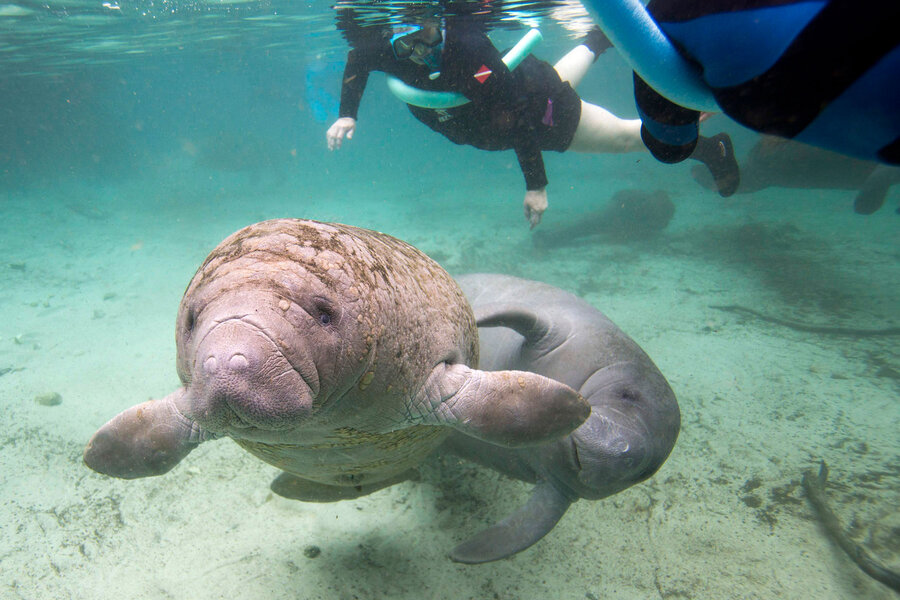Should manatees come off the endangered species list?
Loading...
At least 1,200 comments have poured in from around the country from people eager to weigh in on the federal government’s proposal to drop manatees from the endangered species list.
The US Fish & Wildlife opened the issue up for public input in January, when it announced a plan to change the federal status of the West Indian manatee (found most commonly in Florida in the winter) from "endangered" to "threatened." So far it at least, it seems a resounding majority of the pubic doubts that it is time to reduce protections for Florida's beloved manatees.
“As self appointed keepers of this planet, it is our duty to protect all living things to ensure their survival,” wrote one commenter, Charlene Buchan, to the Fish & Wildlife Service, according to The Tampa Tribune. “The manatee must be protected along with all other marine life. We have no right to play God and decide who lives and who dies amongst the other species on Earth,” she wrote.
The Tribune analyzed a sample of 200 submitted comments and found that only four of those were in favor of the federal government’s demotion plan, which cites a massive rebound in the manatee population as the reason for its removal from the endangered list.
"While there is still more work to be done to fully recover manatee populations, their numbers are climbing and the threats to the species’ survival are being reduced," Michael Bean, an official from the US Department of the Interior said in a news release.
An endangered species is defined by the federal government as “any species that is in danger of extinction throughout all or a significant portion of its range,” according to the Fish & Wildlife Service. A threatened species is “any species that is likely to become an endangered species within the foreseeable future throughout all or a significant portion of its range.”
Often called a sea cow – though the marine mammal is more closely related to the elephant – West Indian manatees have rebounded by 500 percent since 1991, when as few as 1,267 were counted lumbering along Florida’s coasts. Today, there are more than 6,300 manatees in Florida, and 13,000 found throughout their range in the southeastern United States, Puerto Rico, Mexico, Central America, South America, and Greater and Lesser Antilles, according to federal data.
Since 1978, when Florida designated the entire state a “refuge and sanctuary" for manatees, the state has diligently protected its signature sea mammal. It established boat-free sanctuaries and required speed limits for boats to prevent collisions with the animals. The state also cleaned up its water bodies to preserve the manatees' habitat, as The Christian Science Monitor has reported.
“Counting this many manatees is wonderful news,” said Richard Corbett, now former chairman of Florida’s Fish and Wildlife Commission said in a statement last year. “The high count this year shows that our long-term conservation efforts are working,” he said.
But some manatee advocates worry that the Fish and Wildlife Service is labeling the manatee rebound as progress too soon.
"The Endangered Species Act has enemies, and if the agencies don't show movement, they come under fire," Katie Tripp, director of science and conservation for the Save the Manatee Club, wrote in Florida’s Sun Sentinel in January.
"Save the Manatee Club has been working for almost 35 years toward a day when manatees can be downlisted and ultimately delisted from the Endangered Species Act, but the manatees' future is far from certain which means the work is far from over," she wrote.
This report contains material from the Associated Press.





